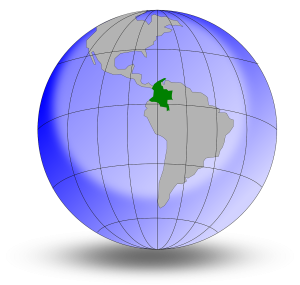Colombia-A Major Energy Market – Part One
Potential in Colombia’s Energy Market
Over the coming months, the Twin Feathers blog will be featuring reviews of other countries in the Western Hemisphere as we explore their connection to the Global LPG markets. We begin our series with a two-part look at Colombia.
A major energy producer and exporter in South America
Colombia is a major energy producer and exporter in South America, with abundant reserves of oil, natural gas, and coal. The country also has a large potential for renewable energy, especially hydropower, which accounts for most of its electricity generation. Colombia’s energy consumption is mainly driven by oil, followed by natural gas and hydroelectric power. The country faces some challenges in maintaining its energy security and sustainability, such as aging infrastructure, social unrest, environmental impacts, and regulatory uncertainty.
Key facts and figures about Colombia’s energy sector
Some of the key facts and figures about Colombia’s energy sector are listed below.
Oil and petroleum production and exports
- As of January 2022, Colombia had 1.8 billion barrels of proved crude oil reserves.
- In 2021 they were the fifth-largest crude oil exporter to the United States.
- In 2021 they were also South America’s largest coal producer and second-largest producer of petroleum and other liquids after Brazil.
- Their production of petroleum and other liquids has been declining in recent years. Their total petroleum and other liquids production fell from 808,000 barrels per day (b/d) in 2020 to an average of 760,000 b/d in 2021.
Breakdown of energy usage
- Energy usage in Colombia totaled 1.7 quadrillion British thermal units (quad) in 2020.
- Oil accounted for the largest share of their total energy usage at 31%, followed by natural gas at 28%, and hydroelectric power at 22% in 2020.
Investment in Renewable Energy
- Colombia uses hydropower to meet most of its electricity needs, with a total installed capacity of 17.4 gigawatts (GW) in 2019.
- Colombia has a target to increase the share of non-conventional renewable energy sources (such as wind, solar, biomass, and geothermal) to 10% of its electricity generation by 2022.
Colombia’s natural gas usage
The demand for natural gas is associated with power production, industries, and residential consumption. The graph to the right shows the different gas usage levels.
Location of oil & gas fields
To support their energy usage, Colombia has a few oil and gas fields that are in production to cover internal demand, these areas are as follows:
1. VIM-5 Field (Clarinete, Pandereta, Oboe)
2. Cusiana
3. Bomga-Mamey
4. Chuchupa
5. Cupiagua
6. Florena
7. Gibraltar
8. Nelson
9. Regasificadora Baru
Gas companies’ earnings
Colombian gas companies have an income of 9.3 billion in United States dollars (US$). These companies work throughout the country with an operative profit of 1.3 billion US$ and total profit of 1.0 B US$.
Increasing need for imported energy
The total market for LPG and natural gas in Colombia is 10.2 million users. The growth rate for these markets is between 2.2 to 4% interannually. In 2022 the total LPG and natural gas volume consumed in Colombia was 710.000 Metric Tons (321.3 MM gal).
For the first six months of 2023, Colombia has imported 139.8 million gallons of LPG to cover current demand and the requirements of 2022. This level matched the peak of imports in 2019, with amounts imported totaling 221 MM gallons. 2019 was the first year of stronger imports due to reductions in local production.
Colombia’s growing energy market, combined with decreased production and an increase in imports provides the North American energy market with unique insights and opportunities for future growth. Be sure to check back here for Part Two of our exploration of the Colombian energy market in the coming weeks.
If you would like more expert advice on today’s changing energy market, contact a Twin Feathers team member.
Colombia – A Major Energy Market – Part One
By Gabriel Amundarain






